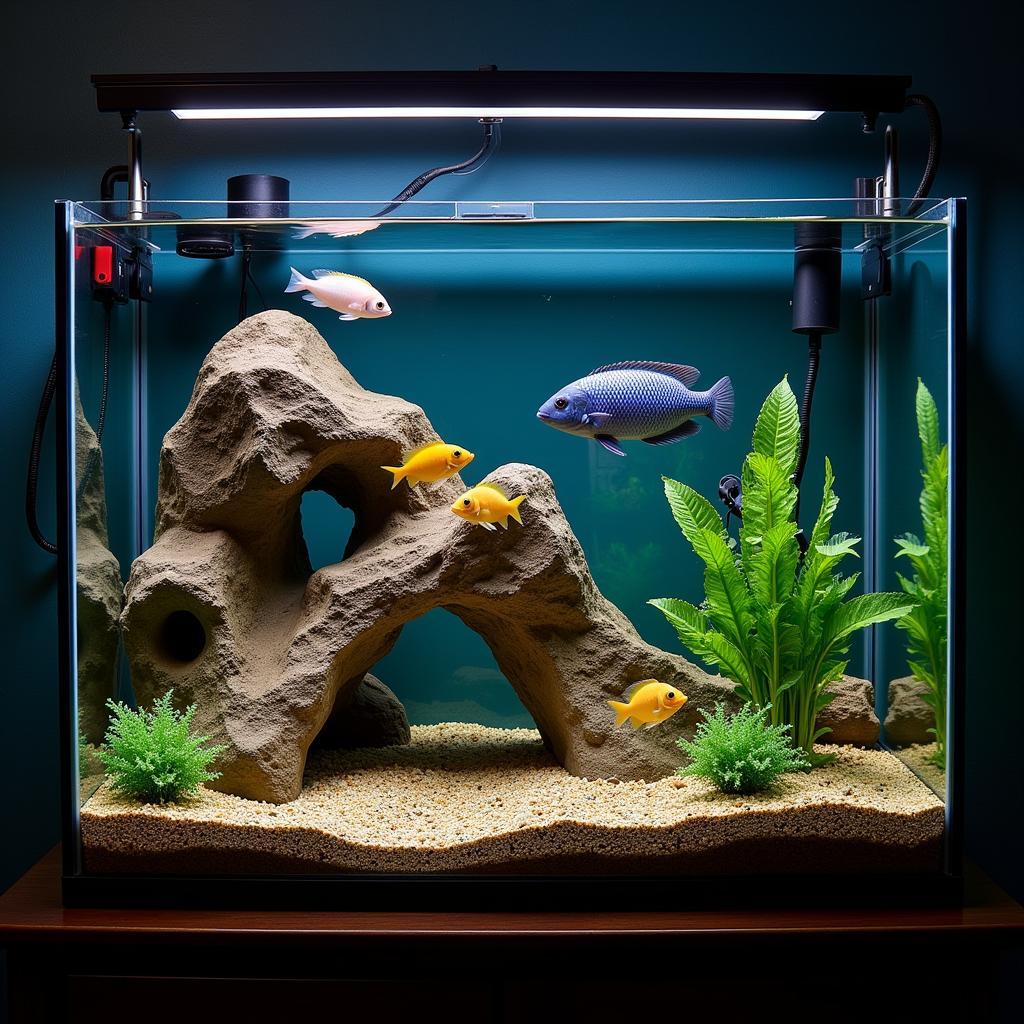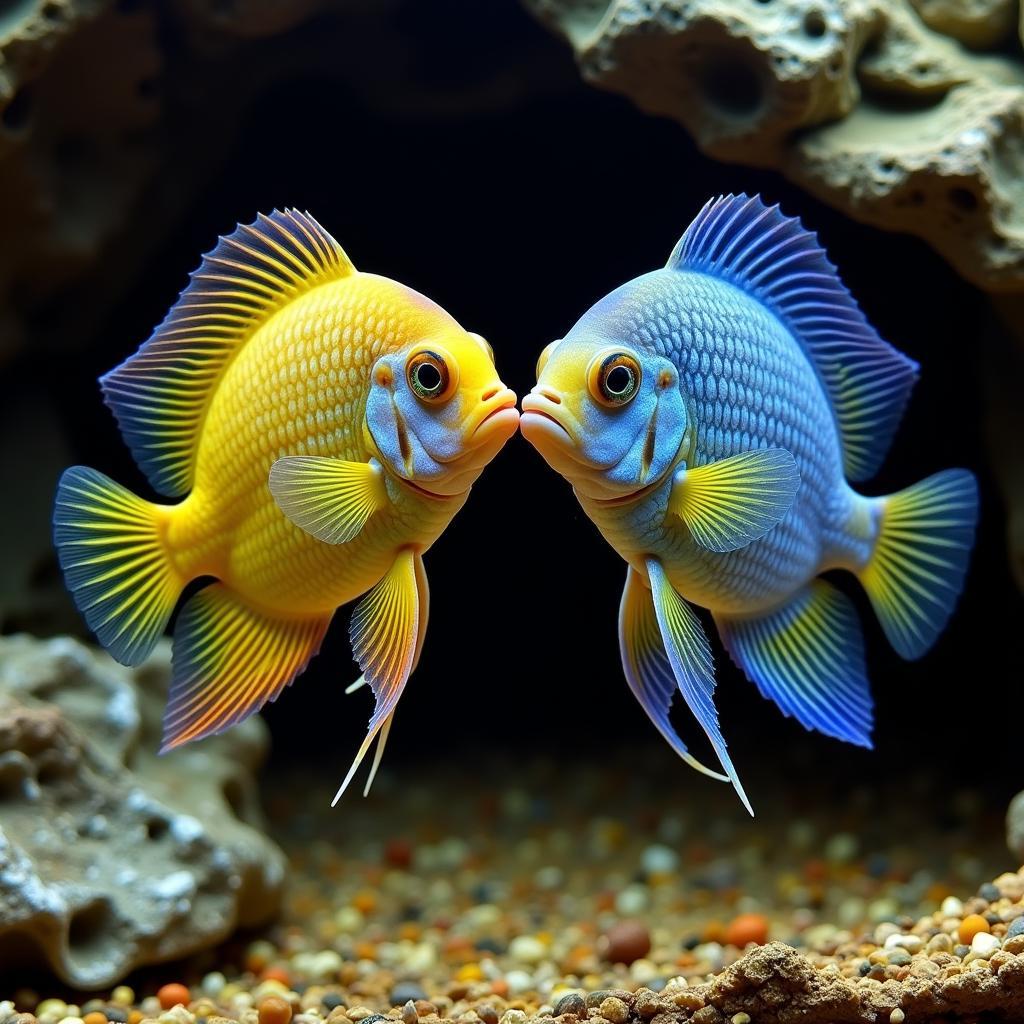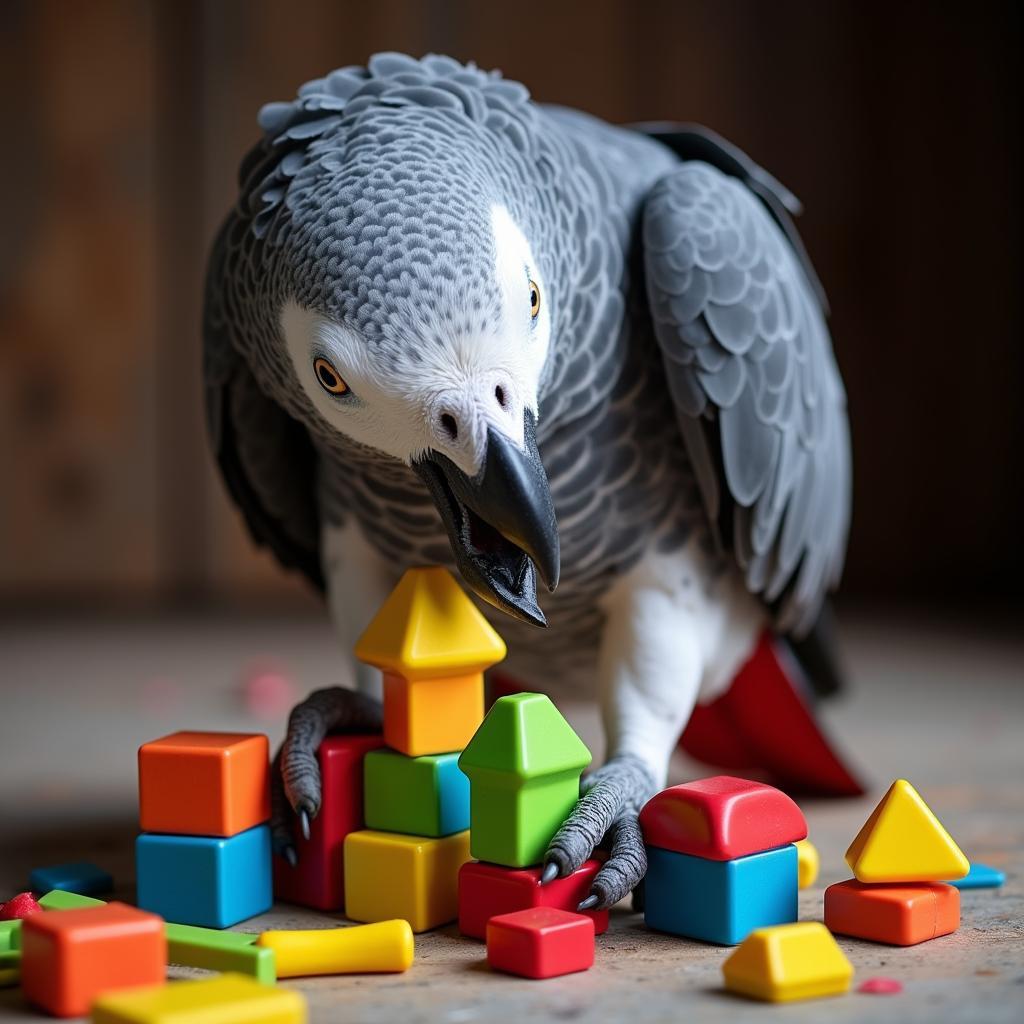African Cichlid Care Sheet: A Comprehensive Guide
African cichlids are a popular choice for aquarium enthusiasts due to their vibrant colors and engaging behaviors. This comprehensive African Cichlid Care Sheet will guide you through everything you need to know to successfully keep these fascinating fish. From setting up the perfect tank environment to understanding their dietary needs and breeding habits, we’ll cover it all.
Tank Setup for African Cichlids
The first step in african cichlid care is creating a suitable habitat. A spacious tank is crucial, as these fish can grow quite large and are often territorial. The minimum tank size recommended for most African cichlids is 55 gallons, but larger is always better, especially if you plan on keeping multiple fish. The tank should be equipped with a powerful filtration system capable of handling the bioload produced by these active fish. Regular water changes are also essential to maintain water quality. Adding rocks and caves will provide hiding places and mimic their natural environment, reducing stress and aggression.
Choosing the right substrate is also important. Fine sand or gravel is ideal, as it allows cichlids to sift through it, a natural behavior they exhibit in the wild. Avoid substrates with sharp edges, as they can injure the fish. Water temperature should be maintained between 76-82°F (24-28°C), and the pH should ideally be between 7.8 and 8.6, reflecting the alkaline waters of the African Rift Lakes.
After this paragraph, insert the first shortcode:
 African Cichlid Tank Setup Example
African Cichlid Tank Setup Example
Understanding African Cichlid Diet and Feeding
African cichlids have diverse dietary needs depending on their species. Some are herbivores, while others are carnivores or omnivores. Researching the specific dietary requirements of your chosen species is essential. A varied diet consisting of high-quality cichlid pellets, flakes, and frozen or live foods like brine shrimp, bloodworms, and mysis shrimp is generally recommended. Overfeeding can lead to poor water quality, so feed your cichlids only what they can consume in a few minutes, two to three times a day.
Different species may have specific feeding preferences, so observing your fish and adjusting their diet accordingly is crucial for their health and well-being. Remember to remove any uneaten food to prevent it from decaying and affecting water quality.
Breeding African Cichlids: A Rewarding Challenge
Breeding African cichlids can be a rewarding experience. Many species are mouthbrooders, meaning the female will hold the fertilized eggs and fry in her mouth until they are free-swimming. Providing suitable breeding caves and maintaining optimal water conditions can encourage breeding behavior. Observe your fish carefully for signs of breeding, such as increased aggression or digging behavior.
Once the fry are released, they can be fed crushed flakes or baby brine shrimp. Raising fry requires dedicated care and attention, including frequent water changes and a nutritious diet. Be prepared for the possibility of aggression between parents and fry, and have a plan for separating them if necessary.
After this paragraph, insert the second shortcode:
 African Cichlid Breeding Pair Displaying Courtship Behavior
African Cichlid Breeding Pair Displaying Courtship Behavior
Common African Cichlid Diseases and Prevention
Maintaining excellent water quality and providing a nutritious diet are the best ways to prevent diseases in African cichlids. However, even with the best care, diseases can sometimes occur. Common diseases include ich (white spot disease), bloat, and fin rot. Early detection and treatment are crucial. Quarantining new fish before introducing them to your main tank is a good practice to prevent the spread of disease.
Observe your fish regularly for any signs of illness, such as lethargy, loss of appetite, or unusual markings. If you suspect your fish is sick, consult a veterinarian or experienced aquarist for advice on diagnosis and treatment options.
Water Changes: The Key to Healthy Cichlids
Regular water changes are vital for maintaining a healthy environment for african cichlids. Partial water changes of 10-20% should be performed weekly or bi-weekly, depending on the stocking level and tank size. This helps remove accumulated waste products and replenish essential minerals. Use a gravel vacuum to remove debris and uneaten food from the substrate during water changes. Ensure the new water is dechlorinated and at the same temperature and pH as the tank water to avoid shocking the fish.
After this paragraph, insert the third shortcode:
Conclusion
Caring for african cichlids can be a fulfilling hobby. By understanding their specific needs and providing the right environment, you can enjoy the beauty and vibrant personalities of these fascinating fish for years to come. Remember that diligent african cichlid care involves regular monitoring of water parameters, providing a balanced diet, and addressing any health issues promptly.
FAQ
- What is the ideal tank size for African cichlids? A minimum of 55 gallons, but larger is always recommended.
- What is the best diet for African cichlids? It depends on the species, but a varied diet of pellets, flakes, and frozen or live foods is generally recommended.
- How do African cichlids breed? Many species are mouthbrooders, meaning the female holds the eggs and fry in her mouth.
- What are some common African cichlid diseases? Ich, bloat, and fin rot are common.
- How often should I perform water changes? Weekly or bi-weekly partial water changes of 10-20% are recommended.
- What is the ideal pH for African cichlids? Between 7.8 and 8.6.
- What temperature should the water be for African Cichlids? Between 76-82°F (24-28°C).
Need more help? Contact us! Phone: +255768904061, Email: [email protected] or visit us at Mbarali DC Mawindi, Kangaga, Tanzania. We have a 24/7 customer service team.
